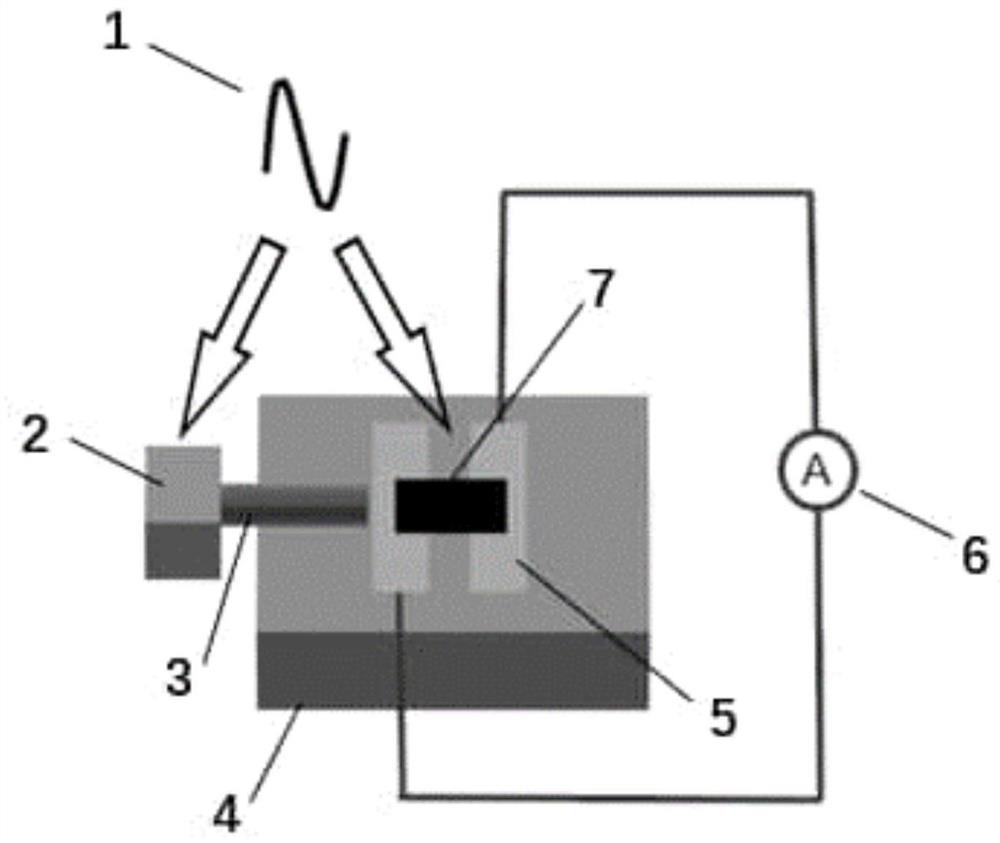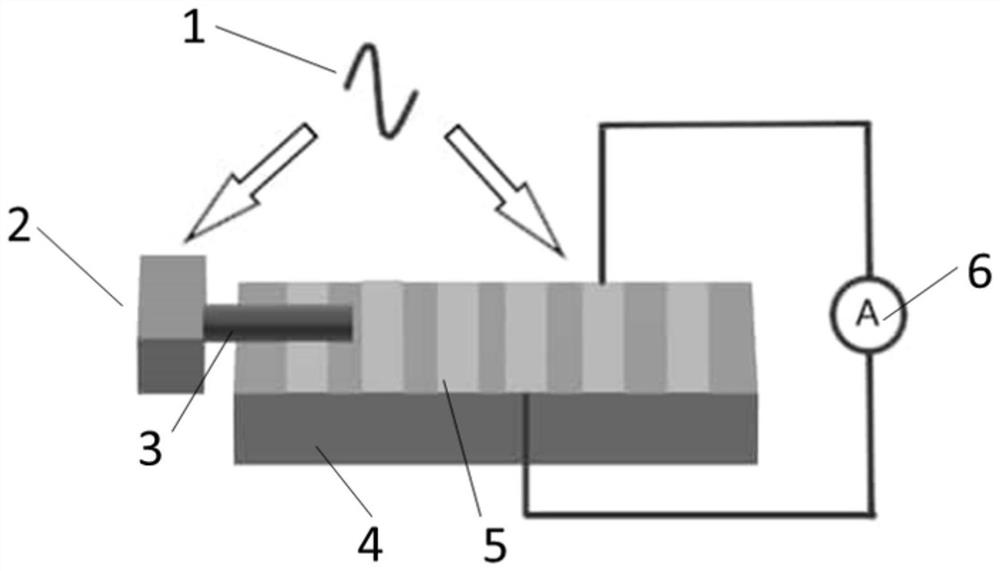A coherent near-field detection system based on free electron excitation and photodetection
A technology of electron excitation and photoelectric detection, which is applied in the cross-field of vacuum electronics and terahertz photodetection technology, can solve problems such as difficulty in upgrading, resolution dependence, contradiction between near-field coupling efficiency and imaging resolution, etc., to achieve deeper near-field The understanding of characteristics, the effect of less interference factors
- Summary
- Abstract
- Description
- Claims
- Application Information
AI Technical Summary
Problems solved by technology
Method used
Image
Examples
Embodiment 1
[0025] This example figure 1 As shown in , the femtosecond laser source produces a femtosecond laser with a certain repetition rate (such as 10MHz), and the femtosecond laser is divided into two beams by a beam splitter, which are used to excite the photocathode to generate photoelectron emission and excite the low temperature of the photoconductive antenna respectively. Gallium arsenide substrates generate freely moving charge carriers. Among them, the femtosecond laser connected to the photoconductive antenna needs to pass through an optical delay optical path (not shown in the figure), and then converge from the lower surface of the photoconductive antenna to the slit of the two metal electrodes. The corresponding 2D material to be tested. The pulsed electron beam generated by the photocathode skims the surface of the photoconductive antenna. When the electron projected field passes between the two metal electrodes of the photoconductive antenna, corresponding surface wave...
Embodiment 2
[0027] This example figure 2 As shown, the principle is similar to the first embodiment, except that the material to be tested is a metal grating structure, so two adjacent metal gratings are used as metal electrodes. The surface wave of the metal grating structure is generated by the interaction between the pulsed electron beam and the metal grating. Two adjacent metal gratings are used as the electrodes of the photoconductive antenna. The substrate is also made of low-temperature gallium arsenide. The propagation of the surface wave leads to a gap between the metal gratings used as electrodes. A changing potential difference is produced. This method can detect surface waves with different frequencies caused by changing the grating parameters.
PUM
 Login to View More
Login to View More Abstract
Description
Claims
Application Information
 Login to View More
Login to View More - R&D
- Intellectual Property
- Life Sciences
- Materials
- Tech Scout
- Unparalleled Data Quality
- Higher Quality Content
- 60% Fewer Hallucinations
Browse by: Latest US Patents, China's latest patents, Technical Efficacy Thesaurus, Application Domain, Technology Topic, Popular Technical Reports.
© 2025 PatSnap. All rights reserved.Legal|Privacy policy|Modern Slavery Act Transparency Statement|Sitemap|About US| Contact US: help@patsnap.com


